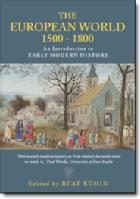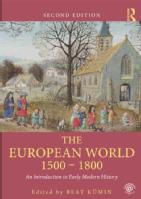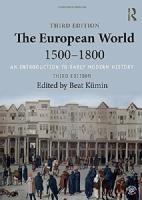Beat Kümin: Public Engagement
These pages highlight initiatives related to areas of my research - see also media work and learning resources.
Any questions or ideas for new projects? Please get in touch.
Restoration of the Republic of Gersau: Bicentenary 1814-2014
For over 400 years, the parish of Gersau on Lake Lucerne formed a sovereign mini-state under the protection of the Swiss Forest Cantons and the Holy Roman Emperor. From the purchase of all feudal rights in 1390 to the French invasion in 1798, this rural commune passed its own laws, ran its own jurisdiction and maintained its own militia. It even appointed the local priest and wrote its own chronicles. Following the defeat of Napoleon, the Swiss were free to return to the old order. On 2 February 1814, the Landsgemeinde (communal assembly) decided to restore the independent republic. This was short-lived, however, and Gersau became a district of the Canton of Schwyz in 1818.


In the course of researching The Communal Age in Western Europe and a Bristish Academy project dedicated to rural republicanism, I devised a proposal for a series of 'Gersau 2014' bicentenary celebrations under the general theme of 'Geschichte Gestalten' (Shaping History). The project, also intended to reassess how Gersau sees its future, was officially endorsed by the district council and I joined its organizing committee (see my interviewLink opens in a new window in the regional newspaper Bote der Urschweiz). A Landsgemeinde in the parish church and 'Feast of the Republic' in the school served as launch events on 2 February 2014 (covered e.g. in the Wochen-ZeitungLink opens in a new window and a Swiss National Radio podcastLink opens in a new window). In March 2014, furthermore, I hosted a workshop on premodern republics (see video interviewLink opens in a new window) and chaired a public panel debate on the extent of Gersau's freedom past and present.
Learning Resources
Early Modern History Textbook: Drawing on the wide expertise of my Warwick colleagues (and our undergraduate core module), I edited a survey work on early modern European history aimed at a general audience. All contributions provide concise and accessible introductions to the major themes and debates in the field. Reviewers have described the book as 'impressive', 'precise' and 'brilliantly executed'. It has been adopted as a set text by numerous tutors in the UK and overseas, but can also serve as a free-standing guide to the period. The European World 1500-1800 , first published by Routledge in 2009 and now in its 3rd edn (2018), contains essays, illustrations, excerpts from primary sources, seminar questions, maps, tables, suggestions for further reading and an extensive index of names, places and subjects. There is also a companion website
, first published by Routledge in 2009 and now in its 3rd edn (2018), contains essays, illustrations, excerpts from primary sources, seminar questions, maps, tables, suggestions for further reading and an extensive index of names, places and subjects. There is also a companion website featuring interactive maps / timelines, image gallery and a glossary.
featuring interactive maps / timelines, image gallery and a glossary.
Parish Church DVD: I acted as associate editor of The English Parish Church through the Centuries, an interactive DVD published by the Centre for the Study of Christianity and Culture in 2010. It includes contributions by over 200 academics and parish researchers, supplemented with 3-D models, video introductions and numerous illustrations.
Reformation Video / Podcast / Article: I recorded a course of five video lectures on the German Reformation for the MASSOLIT site aimed at sixth form students, assessed the impact of Luther's Ninety-Five Theses for an A-level magazine and - together with my colleagues Henry Cohn, Peter Marshall and Penny Roberts - a podcast series on the origins, character and effects of religious change in the sixteenth century for the Historical Association.



